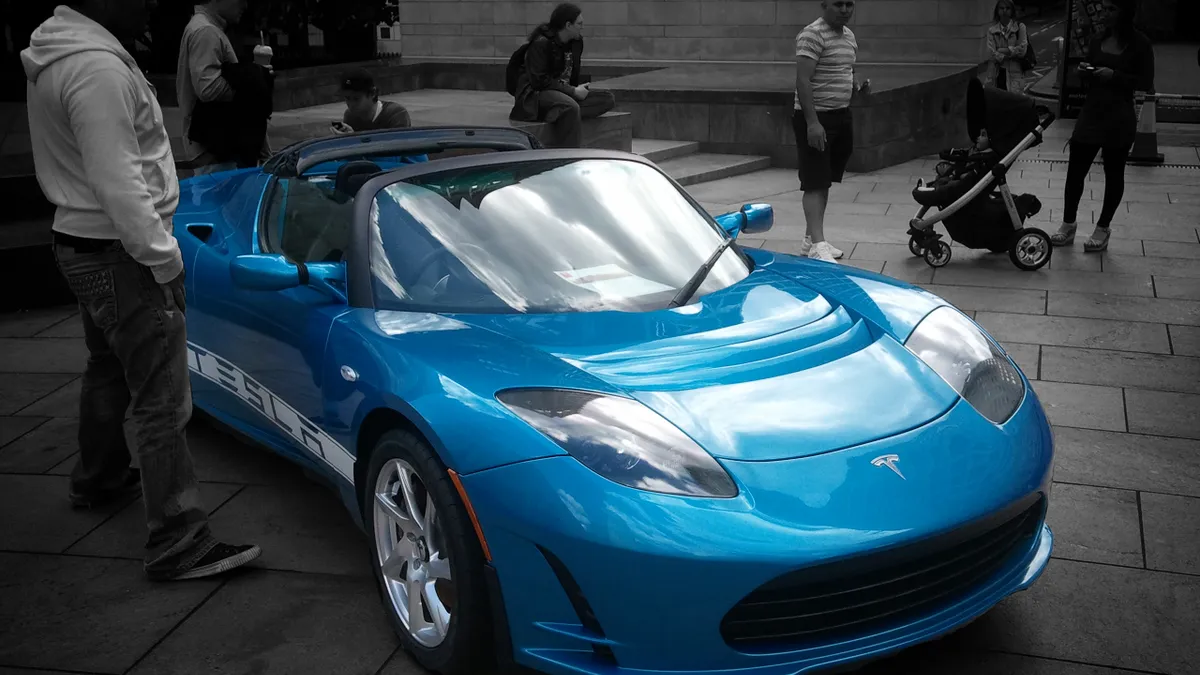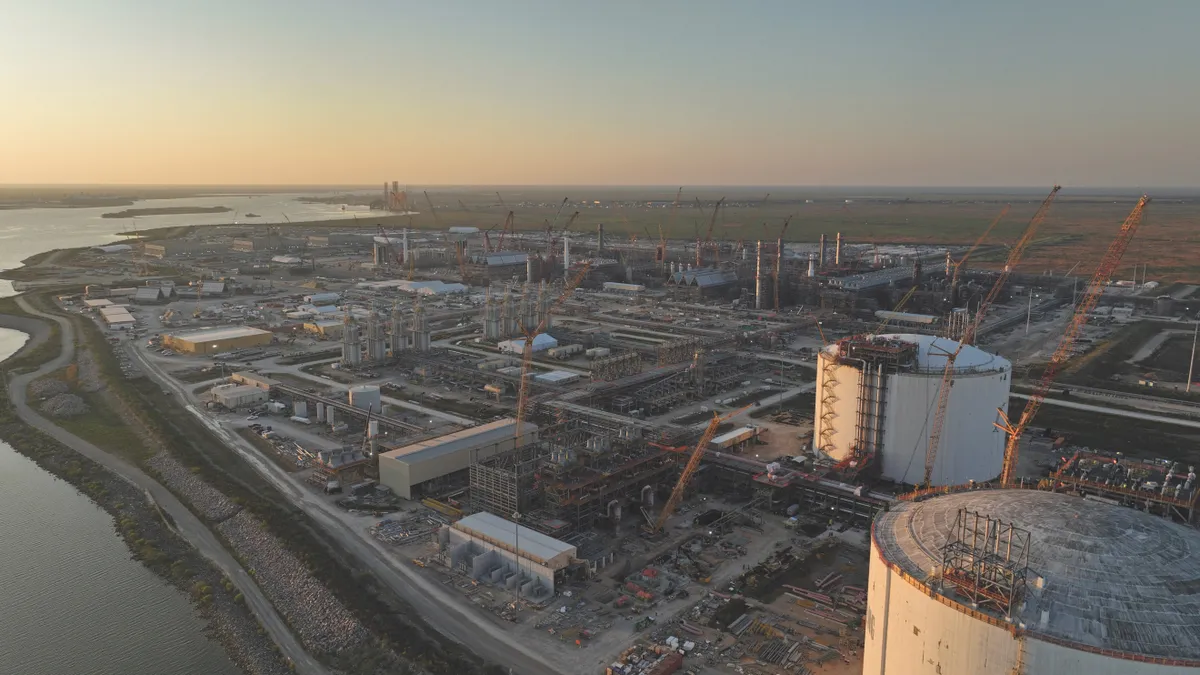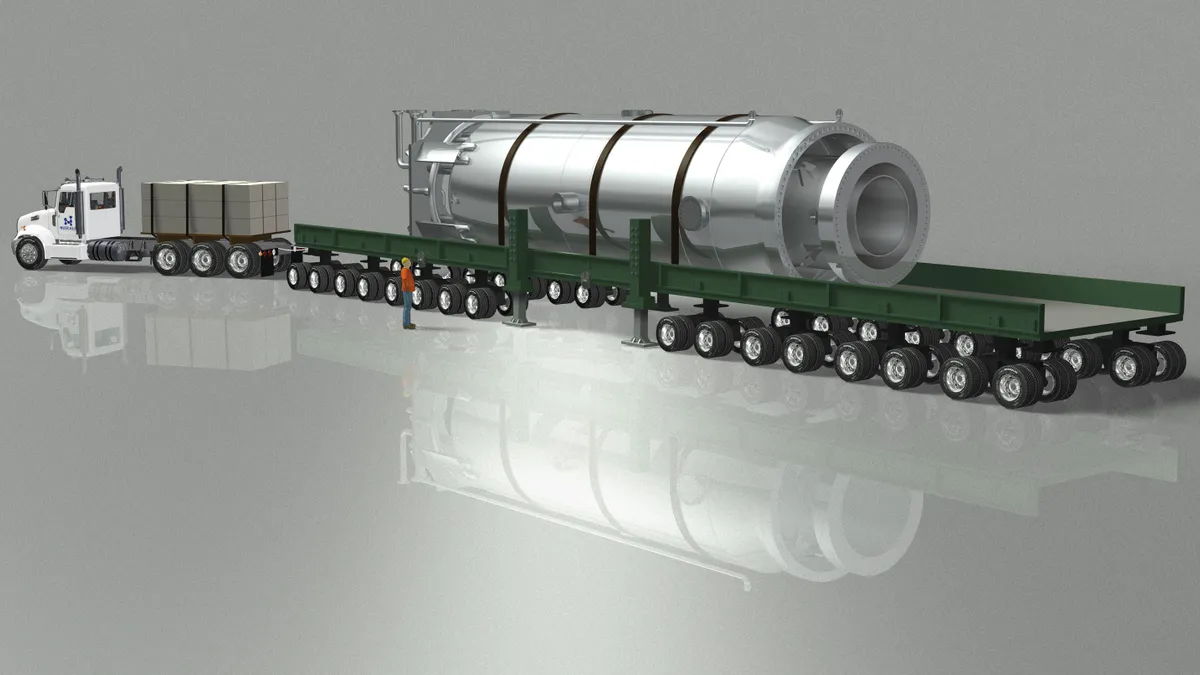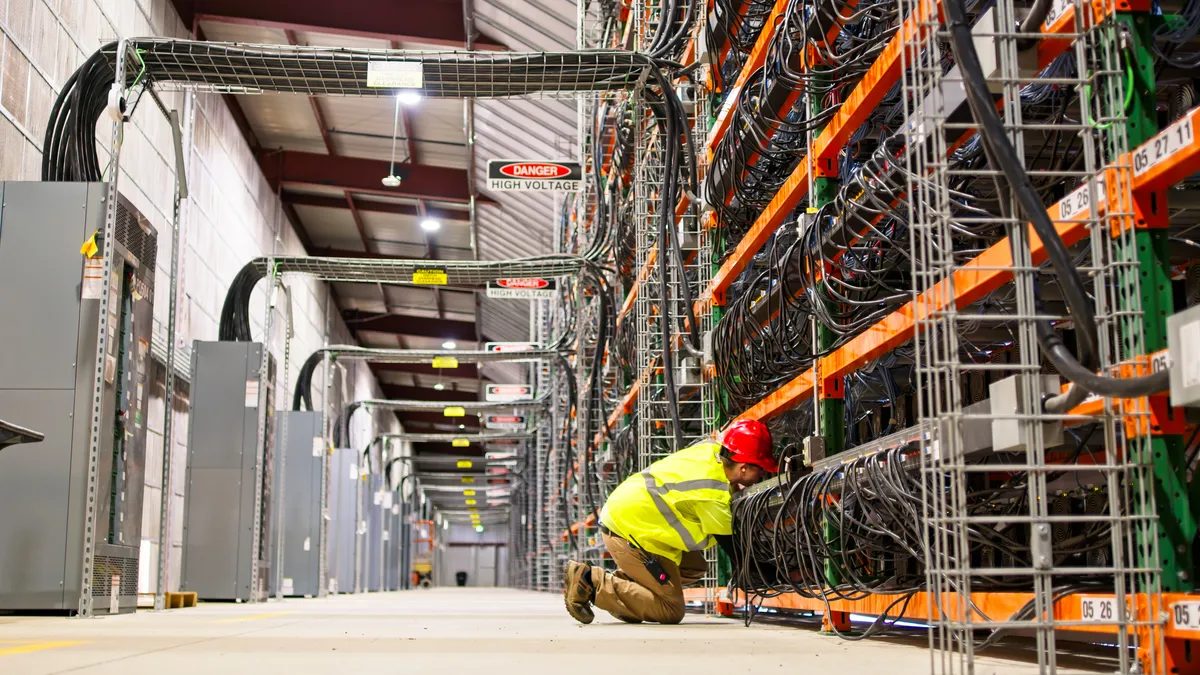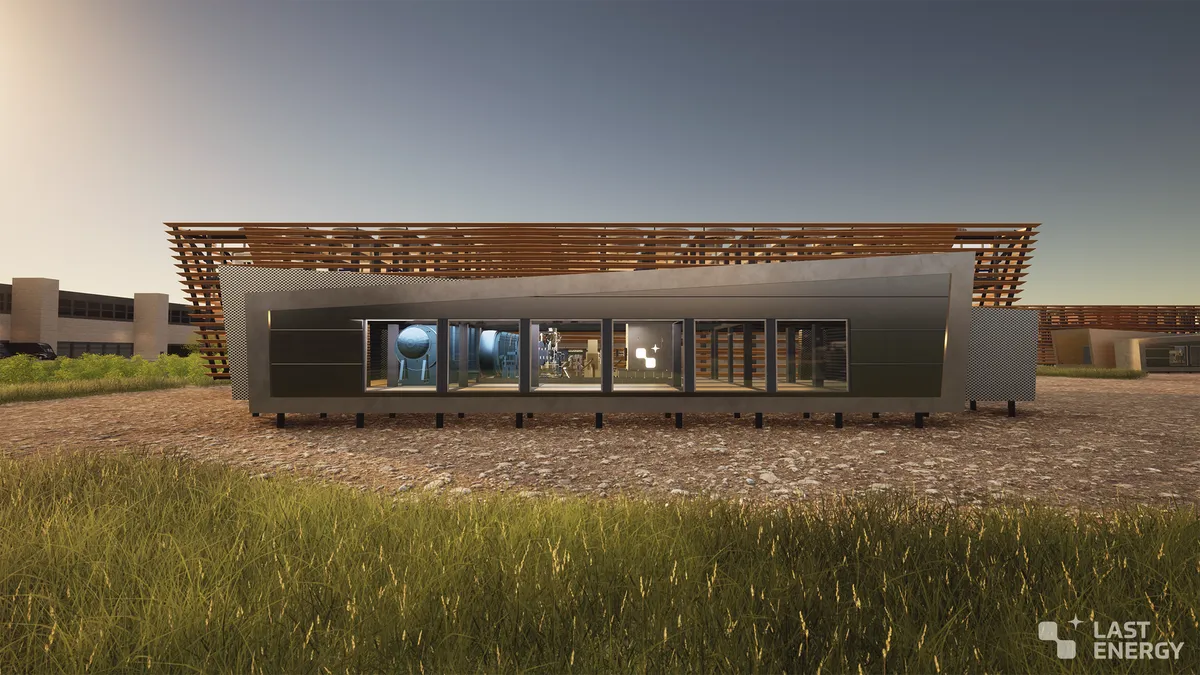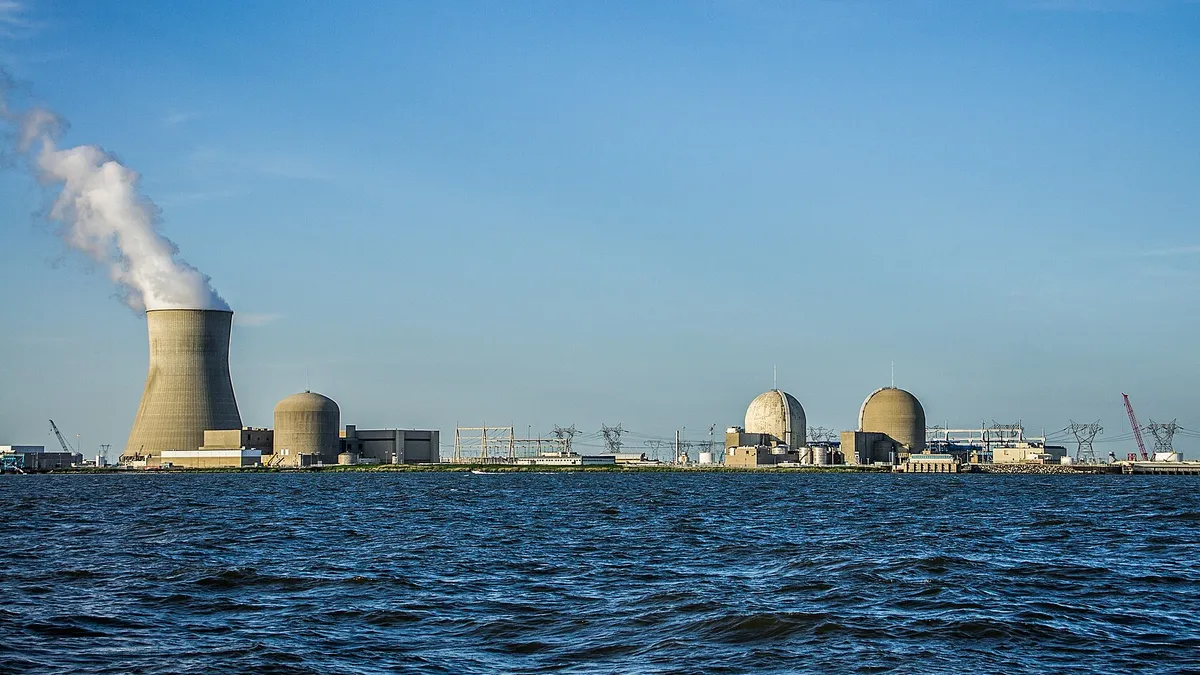Led by high-flying entrepreneur Elon Musk, Tesla Motors plans to build a $5 billion Giga factory to produce lithium-ion batteries. But while batteries from the factory may go in Tesla cars, the Giga factory's implications extend far beyond the automobile industry.
“The days when Tesla was known as purely an auto company are numbered,” Morgan Stanley analyst Adam Jonas wrote recently in a note titled "Nikola’s Revenge: TSLA’s New Path of Disruption."
Utility Dive takes a look at the disruptive implications of the Giga factory, what Tesla's endgame is, and whether it can be called a car company anymore.
The Giga factory
Saddled with a whopping $5 billion price tag, Tesla's Giga factory is the most ambitious play in electric transportation yet. Initial production is slated to start by 2017 and the plant aims to reach full capacity by 2020.
At full capacity, the plant expects to produce 35 gigawatt-hours of lithium ion cells per year — more than the existing capacity of all batteries worldwide today.
“This will allow us to achieve a major reduction in the cost of our battery packs and accelerate the pace of battery innovation,” Tesla’s investor newsletter said. “With this facility, we feel highly confident of being able to create a compelling and affordable electric car in approximately three years.”
Tesla believes the Giga factory will drive down the cost of its battery packs 30% by 2017 and 50% by 2020. With the Giga factory’s 35GWh of battery storage in hand, Tesla plans to ramp electric vehicle production up to 500,000 cars by 2020. For perspective, Tesla says it will produce 35,000 cars in 2014, and there are 40,000 Tesla cars on the road today.
But while cost reductions achieved through the Giga factory could greatly accelerate the adoption of electric vehicles in the U.S., Adam Jonas believes the implications of the Tesla plant extend past transportation.
"We are witnessing the most disruptive intersection of manufacturing, innovation and capital experienced by the auto industry in more than a century,” Jonas said. “Tesla may be in position to disrupt industries well beyond the realm of traditional auto manufacturing. It’s not just cars."
The Holy Grail
Tesla vehicles aren't just vehicles — they're a mobile fleet of batteries.
Morgan Stanley analyst Adam Jonas estimates Tesla's 40,000 vehicles on the road today can hold up to 3.3 gigawatts of storage capacity. That's equivalent to 0.3% of U.S. electric generating capacity and 14% of grid-scale storage.
Morgan Stanley predicts there will be 3.9 million Tesla cars on the road by 2028, which will be able to store 237 gigawatts of capacity. That's 22% of U.S. electric generating capacity and more than 10 times the amount of grid storage capacity today. This gives Tesla a potentially massive opportunity in the vehicle-to-grid and vehicle-to-building spaces.
If everything goes according to plan — and that’s a big if — Tesla’s Giga factory could even upend the electric utility industry. That's because "battery storage is the holy grail of the distributed generation movement,” said Travis Miller, an analyst at Morningstar. “If developers can create a high-capacity battery technology, it opens the door to a significant increase in options for customers to supply their own power.”
And Tesla has confirmed the Giga factory is not just for electric vehicles. “[The Giga factory] will also allow us to address the solar power industry’s need for a massive volume of stationary battery packs,” Tesla's investor letter said. Since it's built at such a massive scale, the plant could bridge the innovation gap to cost-effective energy storage. Tesla batteries are already being used to bundle solar and storage for homes and businesses. Of course, Musk's cousin Lyndon Rive is the CEO of SolarCity, while Musk is Chairman of the board.
“If you can get batteries cheap enough and combine them with solar panels, you no longer need the utility,” said Sam Jaffe, a Navigant analyst. “Then the question is how cheap does it have to be? And it has to be really, really, really cheap.”
For it to make economic sense for consumers to invest in distributed generation, Jaffe estimates the Tesla would have to drive down battery costs by 70% or more. Tesla aims to cut battery costs by 50% by 2020. But Musk did recently say the Giga factory could bring costs all the way down to $100 per kWH — a 75% drop.
Tesla's endgame
"Tesla is an extremely ambitious company for whom flooding the market with fun-to-drive EVs and giving competitors a headache might not be the endgame," Jonas wrote in his note. "Tesla's limited addressable market, a long-time bear thesis on the stock, appears well up for grabs here."
For Tesla, "the opportunity to disrupt a trillion $ car industry offers an adjacent opportunity to disrupt a trillion $ electric utility industry," Jonas said.
In fact: It’s no secret. Musk has long stated Tesla’s mission goes way beyond electric vehicles.
“The overarching purpose of Tesla Motors (and the reason I am funding the company),” Musk wrote in The Secret Tesla Motors Master Plan (just between you and me), “is to help expedite the move from a mine-and-burn hydrocarbon economy towards a solar electric economy.”
"You can’t quite rely on the market to do the right thing," Musk said in an interview. "In order to have electric vehicles come sooner than they otherwise would — electric vehicles were always going to be the long-term transportation mechanism, but to make that day come sooner — you have to bridge that gap with innovation. That was the goal with Tesla: to serve as a catalyst to accelerate the day of electric vehicles."
The Giga factory surely advances that goal, but it also brings cost-effective storage — key to the deployment of intermittent renewable generation, particularly at a distributed scale — into the equation.
"With its new battery Giga factory, Tesla will no longer be just an EV company, or even a Li-ion battery manufacturer," Chet Lyons, founder of the storage consulting firm Energy Strategies Group, wrote on Greentech Media. "It’s positioning itself to compete in one of the biggest and most lucrative industries on the planet: the utility and power generation industry. Most of its current and future competitors have considerably less vision, less imagination, a lot more baggage and less passion. And of course, none has a Giga factory."



